Vilnius Academy of Arts, the following is an introduction to this school:
Introduction
Vilnius Academy of Arts is an important art school in Vilnius, the capital of Lithuania. It provides a wide range of art education, covering painting, sculpture, design, art history and other fields. It has cultivated many outstanding art talents and has a certain influence in the field of art education in Lithuania and even in the international art education field.
Overview
Number of students: The specific number of students has not been found, but as a well-known art school, it attracts students from Lithuania and all over the world to study and study.
Number of faculty and staff: There is also no exact number, but from the perspective of the school's ability to provide a variety of art courses and professional guidance, it has a considerable number of faculty and staff with high professional quality.
History and establishment time
The school has a long history. Its specific establishment time has not been clearly found, but from the perspective of the development of art in Vilnius, it has witnessed and promoted the continuous development of Lithuanian art education. In different historical periods, the school has been constantly developing and changing, gradually forming the current discipline system and education model, cultivating a large number of outstanding art professionals for Lithuania, and making important contributions to the inheritance and innovation of the country's art and culture.
School Strength
Teaching Staff: The school has a group of teachers with profound attainments and rich experience in the field of art. They not only have solid professional knowledge, but also actively participate in art creation and research activities at home and abroad. They can teach students cutting-edge art concepts and practical skills, and guide students to continue to explore and grow on the road of art.
Teaching resources: Equipped with complete teaching facilities, such as the library with a rich collection of art books, journals and picture albums, providing students with a wide range of learning and research resources; professional studios, sculpture studios, design laboratories, etc., meet the practical needs of students of different majors; in addition, the school also frequently holds various art exhibitions, lectures and seminars, and invites well-known artists and scholars from home and abroad to exchange with the school to broaden students' artistic horizons.
International Exchange: Actively carry out international cooperation and exchange projects, and establish cooperative relations with many well-known art colleges in Europe, Asia, America and other regions. Through student exchanges, teacher visits, joint creation and other forms, it promotes the exchange and integration of art education under different cultural backgrounds, enhances the school's international reputation and influence, and also provides students with a broader international development space.
Nature of the institution
Public art institution.
Educational philosophy
Focus on cultivating students' creativity, individual expression and artistic thinking ability, emphasize the close connection between art and society, culture and history, encourage students to be innovative and explore on the basis of inheriting traditional art, reflect contemporary social life and cultural phenomena with unique perspectives and expressions, cultivate artistic talents with social responsibility and international vision, promote the development and progress of art, and contribute to social and cultural construction.
Key laboratories and disciplines
Key laboratories: The school has a number of professional laboratories and studios, such as painting material laboratories, digital media laboratories, ceramic studios, photography studios, etc. These places provide students with space for practice and exploration, help them master the use of different art media and technologies, and cultivate students' hands-on ability and innovative thinking.
Key disciplines: Painting, sculpture, graphic design, visual communication design, environmental design, art history and theory, film and television art and other disciplines are the key disciplines of the school. They have achieved remarkable results in teaching and research, and provide students with systematic and in-depth professional education, so that they can have a solid professional foundation and a high level of art in their respective fields.
Department Settings
The school generally has a department of fine arts, a department of design, and a department of art theory. Each department contains multiple specific professional directions. For example, the department of fine arts covers oil painting, watercolor painting, printmaking and other majors; the department of design includes product design, fashion design, interior design and other majors; the department of art theory has art history, art criticism, aesthetics and other majors, providing students with diversified learning options to meet the interests and career development needs of different students.
Ranking
The specific ranking of the school was not found in the 2023 THE World University Ranking of Arts and Humanities, but the school is in a leading position in the field of art education in Lithuania, and its education quality and professional level have been widely recognized.
Expenses
Tuition fees: Tuition fees for different majors vary. The annual tuition fee for undergraduate studies is about 2000-3500 euros, and the annual tuition fee for master's studies is about 3000-4500 euros. For specific tuition fees, please refer to the latest information on the school's official website.
Living expenses: Including accommodation, food, transportation, etc., it costs about 500-700 euros per month. The specific cost varies depending on personal lifestyle and consumption habits.
Campus
Campus location: Located in Vilnius, the capital of Lithuania, this city has a long history and rich cultural heritage, providing students with a strong artistic atmosphere and rich creative inspiration. At the same time, Vilnius is also the cultural, economic and political center of Lithuania. Students here can be exposed to more art exhibitions, cultural activities and industry resources, which is conducive to broadening their horizons and improving their comprehensive quality.
Campus facilities: The campus has a unique architectural style, integrating historical and modern elements, and the campus environment is beautiful and shaded by trees. In addition to teaching facilities, the school also has student dormitories, canteens, cafes and other living facilities, providing students with convenient learning and living conditions. In addition, the campus is surrounded by convenient transportation and many cultural and entertainment venues, which is convenient for students to participate in various activities in their spare time and enrich campus life.
-

LCC International University
-
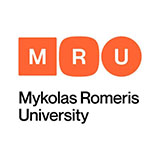
Mykolas Romeris University
-
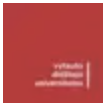
Vytautas Magnus University
-
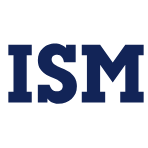
ISM University of Management and Economics
-
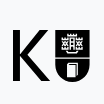
Klaipeda University
-

Lithuanian University of Health Sciences
-
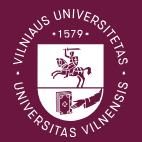
Vilnius University
-

Vilnius Gediminas Technical University
-
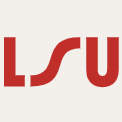
Lithuanian Sports University
-
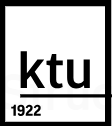
Kaunas University of Technology
-

Mesoamerican University
-

Istmo University
-

Mariano Galvez University of Guatemala
-

Regional University of Guatemala
-

Galileo University
-

Francisco Marroquín University
-

Rafael Landívar University
-

University of the Valley of Guatemala
-

University of San Carlos of Guatemala
-

Technological Institute of Tlaxcala Plateau
-

Golfo University
-

Technological University of South Sonora
-

Technological University of Huejotzingo
-

Tizimín Institute of Technology
-

Chilpancingo Institute of Technology

